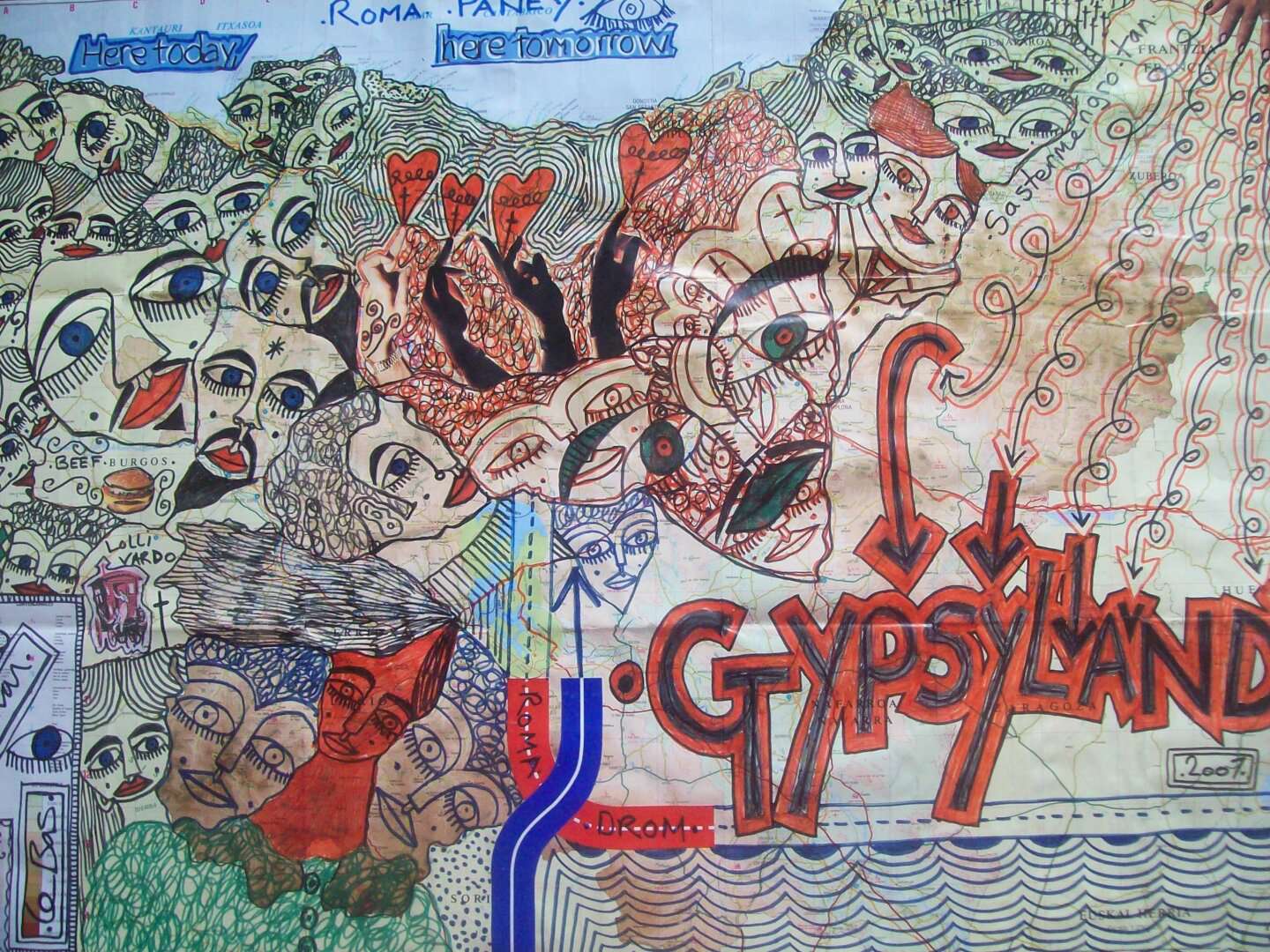Gypsyland. The Atlantic Side Of The Pyrenees is one of the early works under the title Gypsyland. Under this title Damian Le Bas created a possible but so distant imaginary land of the Roma, his Gypsyland, which is denied them as a minority without their own state. It would also be all the more unlikely that this country would be in the area of northern Spain as depicted on the map. It is artistic fiction, a utopia. The use of maps as an underground not only gives Le Bas’s works a texture of their own, it is also the conversion of an object, which actually serves to define boundaries and paths to one that opens up spaces for people. The complexity of collage-like memories, traces and paths are dazzlingly brought together. The banal, like the processing of the name of the city of Burgos into ‘Beefburgos’, always meets profound historical references to the journey of the Roma across national borders; next to the crosses of the dead is the laughter of the present; three hands rise over the land as if with gestures of flamenco; the painted ‘Here today - here tomorrow’ makes the overlapping times clear once again. In this map, the painted faces are layered virtuously over each other. The work evokes the good place that Gypsyland could be. Gypsyland was therefore the title of Damian Le Bas’s first exhibition at the Kai Dikhas Gallery in 2012. The title became a trademark for the artist and was also the title of the first retrospective of Damian Le Bas’ work after his death at the 1st Roma Biennale Come Out now! at the Gorki Theater in Berlin in 2018. The work Gypsyland. The Atlantic Side Of The Pyrenees itself was part of the exhibition of the first pavilion of Sinti and Roma at the Venice Biennale Paradise Lost in Venice 2007, curated by Tímea Junghaus. It thus also stands for the breakthrough of contemporary art of minority made possible by the exhibition.
‘You created a Gypsyland Europa that has no limitations, not confied by boundareis and borders, fluid in ideas, positive in enabling abilities, taking the negatives and making them positives.’
Delaine Le Bas in Gypsyland




